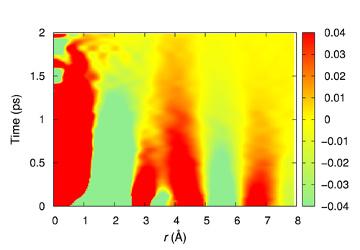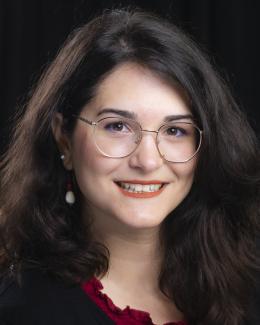Project Details
The science of liquids and glasses is much less developed than that of crystalline materials, even though they are important in energy-related applications. The main origin of this slow progress is the dynamic nature of liquids and the non-periodicity of their structures, which elude the application of condensed-matter theories which presume lattice periodicity. The overarching goal of this program is to establish a fundamental understanding of atomistic mechanisms that control the structure and dynamics of metallic and other liquids and glasses. To achieve this overarching goal this project will focus on the following specific aims: (1) advance the understanding of the cooperative dynamics and medium-range structural order in liquids and glasses, (2) develop the science of topological excitations in the network structure of liquids and glasses and their effects on properties including thermal and spin transport, and (3) advance the understanding of universal aspects of local dynamics in various liquids, including water, molten-salts, electrolytes and liquid chalcogenides. Owing to recent advances in experimental tools and computational power, we now have an excellent prospect of achieving substantial progress through combination of tightly coupled experiment, simulation and theory. In particular, we will examine the atomic dynamics in liquid which leads to glass formation upon cooling, using a new real-space approach with inelastic neutron and x-ray scattering. The outcome of this proposed work will guide us to the development of glasses and liquids with superior properties, and ultimately impact the DOE mission through the development of the general physics of liquids and glasses.

The science of liquids and glasses is much less developed than that of crystalline materials, even though they are important in energy-related applications. The main origin of this slow progress is the dynamic nature of liquids and the non-periodicity of their structures, which elude the application of condensed-matter theories which presume lattice periodicity. The overarching goal of this program is to establish a fundamental understanding of atomistic mechanisms that control the structure and dynamics of metallic and other liquids and glasses. To achieve this overarching goal this project will focus on the following specific aims: (1) advance the understanding of the cooperative dynamics and medium-range structural order in liquids and glasses, (2) develop the science of topological excitations in the network structure of liquids and glasses and their effects on properties including thermal and spin transport, and (3) advance the understanding of universal aspects of local dynamics in various liquids, including water, molten-salts, electrolytes and liquid chalcogenides. Owing to recent advances in experimental tools and computational power, we now have an excellent prospect of achieving substantial progress through combination of tightly coupled experiment, simulation and theory. In particular, we will examine the atomic dynamics in liquid which leads to glass formation upon cooling, using a new real-space approach with inelastic neutron and x-ray scattering. The outcome of this proposed work will guide us to the development of glasses and liquids with superior properties, and ultimately impact the DOE mission through the development of the general physics of liquids and glasses.





